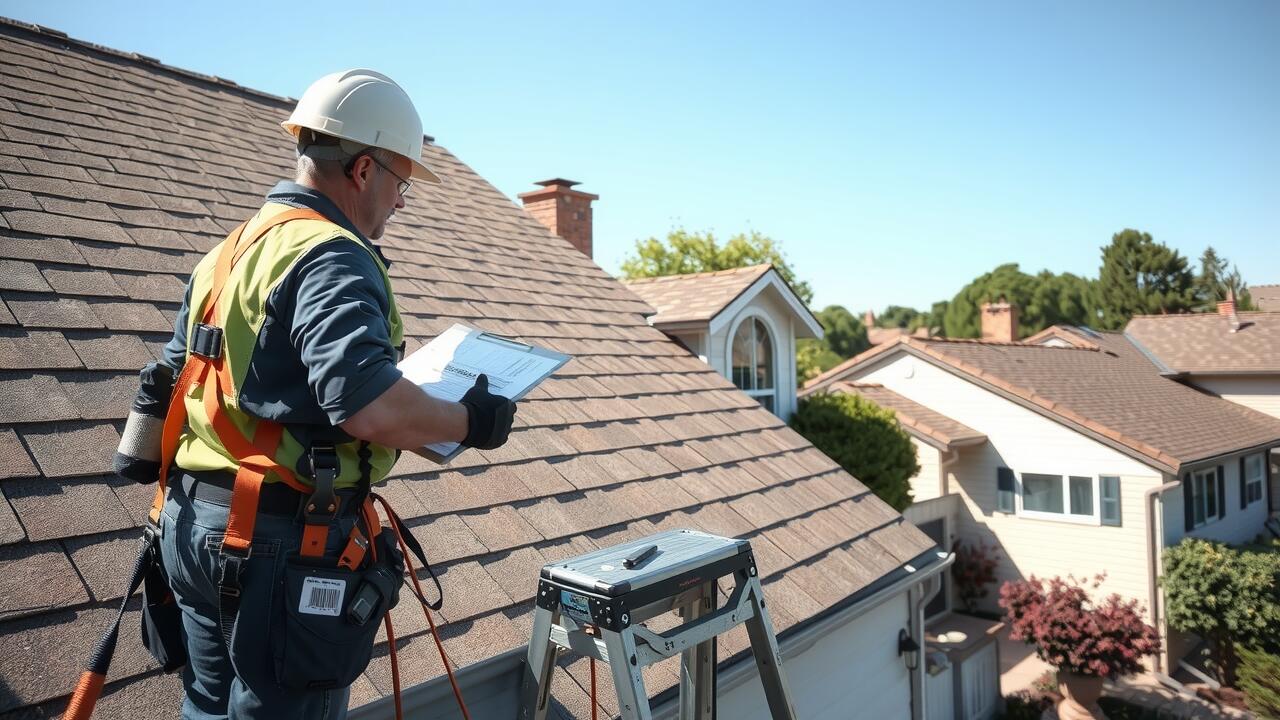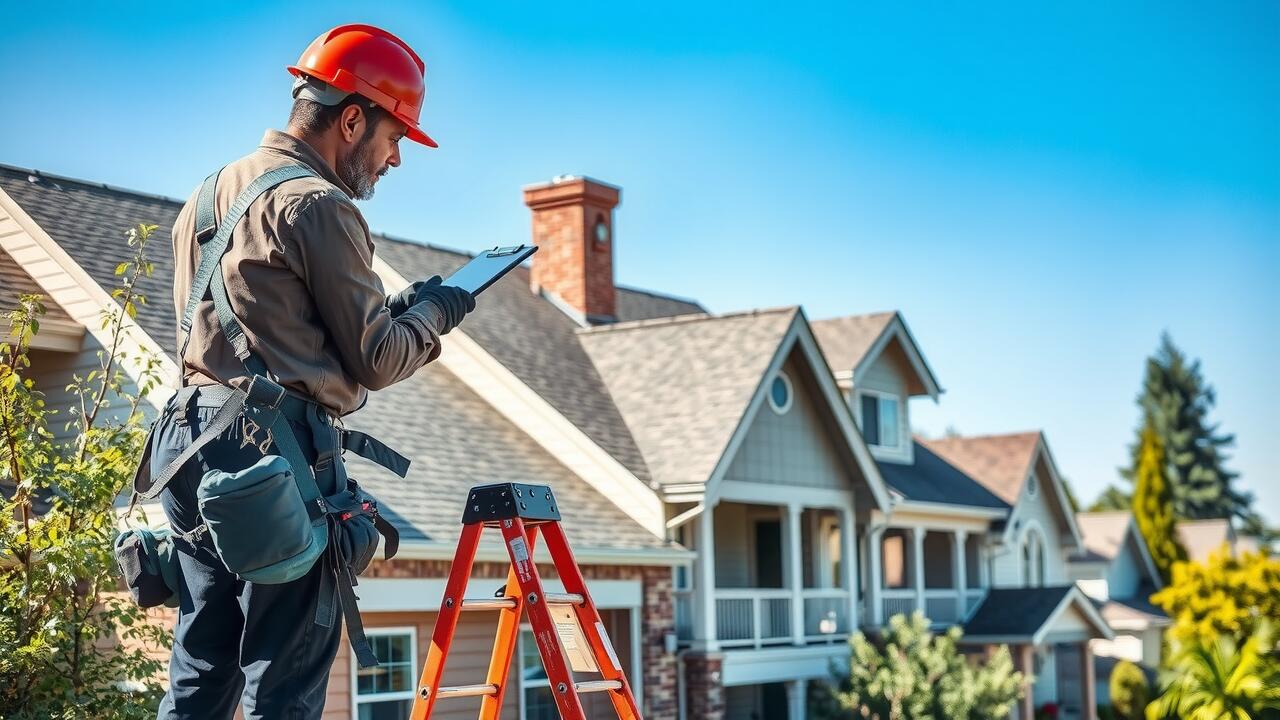
Table Of Contents
Seasonal Considerations for Inspections
Seasonal changes can significantly impact the condition of a roof, making regular inspections essential. In areas like Winterville and Spearfish, varying weather patterns throughout the year contribute to wear and tear. Seasonal moisture, snow accumulation, and intense summer heat can exacerbate underlying issues. Therefore, a proactive approach that includes regular inspections helps identify potential problems before they become serious.
Spring and fall are optimal times for roof inspections. After winter, it is crucial to check for any damage caused by snow and ice, such as leaks or structural strain. In the fall, assessing the roof for debris, such as leaves and branches, ensures that drainage systems remain clear during winter. Homeowners in regions like Winterville and Spearfish should prioritize these inspections to maintain the integrity and longevity of their roofing systems.
Spring and Fall Maintenance Checks
Spring and fall serve as ideal seasons for roof inspections due to weather changes. These transitions allow homeowners to identify potential issues caused by winter snow or spring storms. Debris and leaves can accumulate in gutters, while branches may pose risks during high winds. Scheduling a professional assessment in these seasons aids in maintaining a protective roof over your home.
Roof inspection in Winterville, Spearfish, focuses on potential vulnerabilities that can develop throughout the year. During these checks, inspectors evaluate shingles for damage and assess flashing for wear and tear. Addressing any problems identified in these maintenance checks can prevent larger issues from arising, ensuring that your roof remains in optimal condition.
Common Roof Problems Detected During Inspections
A roof inspection in Winterville, Spearfish is crucial for identifying potential issues before they escalate. Many homeowners are unaware of the common problems that can arise. Leaks are often the first sign of trouble, usually caused by damaged shingles or faulty flashing. Additionally, the presence of pests such as rodents or insects can lead to structural damage and increased repair costs.
Structural issues may not be immediately visible, making regular inspections essential. Over time, shingles can wear down, leading to decreased effectiveness against water infiltration. Weakening support structures can also become a concern, particularly for older roofs. Catching these problems early ensures that homeowners can address them before they lead to more significant and expensive repairs.
Leaks, Pests, and Structural Issues
One of the most significant issues discovered during roof inspections involves leaks. These leaks can stem from a variety of sources, including deteriorating shingles, compromised flashing, or cracks in the roofing material. Identifying and addressing leaks early can prevent further damage not just to the roof but also to the interior of the home. Regular inspections help spot these vulnerabilities before they escalate into costly repairs, ensuring that the roof remains watertight and functional.
Pests also pose a threat to the integrity of a roof. Insects such as termites or woodpeckers can weaken the structure over time. Furthermore, small animals like squirrels may create nests, leading to additional damage. A thorough roof inspection in Winterville, Spearfish can uncover these infestations and allow homeowners to take action. Addressing pest problems promptly protects the roof and maintains the overall health of the home.
The Role of Roof Age in Inspection Frequency
The age of a roof significantly influences how often it should be inspected. Older roofs, typically those over 15 years, are more susceptible to wear and damage. Factors like material type and weather conditions also play a critical role in their lifespan. Homeowners are generally advised to schedule inspections at least twice a year to catch any developing issues early. This proactive approach helps prevent costly repairs and extends the roof's overall life.
In contrast, newer roofs may require less frequent inspections. Depending on the manufacturer’s guidelines, a roof less than 10 years old might only need to be checked once a year. However, even newer roofs can experience problems due to unforeseen circumstances like severe weather or construction nearby. Roof inspection in Winterville, Spearfish provides an opportunity to ensure that even recently installed roofs remain in peak condition. Regular assessments, regardless of roof age, are fundamental to maintaining structural integrity and preventing future issues.
Older Roofs vs. Newer Roofs
Older roofs require more frequent inspections due to their susceptibility to various issues that arise over time. Deterioration may lead to leaks or structural weaknesses, making regular checks essential. Homeowners should pay attention to signs of wear such as curling shingles or missing tiles. These factors indicate that an inspection could uncover hidden problems that might escalate if left unaddressed. In regions like Winterville and Spearfish, seasonal weather changes can exacerbate these issues, further emphasizing the need for vigilance.
Newer roofs typically don't face the same level of scrutiny as their older counterparts. With current materials and construction techniques, they often boast longer warranties and better durability. However, periodic inspections remain beneficial even for these roofs. Homeowners should still schedule roof inspection in Winterville, Spearfish, as routine assessments can catch potential issues early, maintaining the integrity and longevity of the roof. Preventative measures ultimately save on costly repairs that might occur if issues go unnoticed.
FAQS
How often should I have my roof inspected?
It is generally recommended to have your roof inspected at least twice a year, ideally in the spring and fall, to catch any potential issues before they become serious.
What are the signs that my roof needs an inspection?
Signs that your roof may need an inspection include visible leaks inside your home, missing or damaged shingles, sagging areas, or an increase in energy bills.
Are there specific seasonal considerations for roof inspections?
Yes, seasonal changes can affect your roof's condition. It's beneficial to inspect your roof before and after harsh weather seasons, particularly spring and fall, to address any damage caused by winter storms or summer heat.
How does the age of my roof affect how often I should inspect it?
Older roofs may require more frequent inspections due to increased vulnerability to wear and tear. Generally, roofs that are over 15 years old should be inspected at least once a year.
Can I inspect my roof myself, or should I hire a professional?
While you can do a basic visual inspection yourself, it’s advisable to hire a professional for a thorough examination, as they can identify hidden issues and ensure safety during the inspection.
